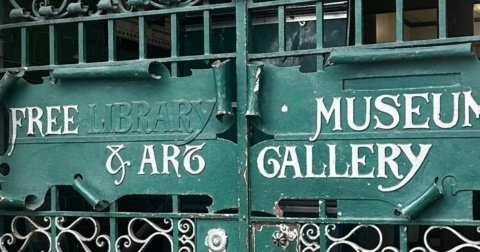The spaces of the Meridiano art gallery seem to be constructed from an interplay of light and shadow, nothing more. Walls dissolve into the darkness, while sculptures in the cloister-like spaces are defined by the light. The art gallery, situated on the Oaxacan coast in Puerto Escondido, Mexico, was designed to serve as a platform for site-specific, experimental exhibitions by a wide range of artists; “expanding the possibilities of the traditional gallery model” through its minimal design. Conceived by the architects Tatsuro Miki and Axel Vervoordt, and founded by Nicholas Olney and Boris Vervoordt, Meridiano’s contemporary art programming is based on the principles of dialogue and exchange, something that is reflected through its open design language.
Two simple geometric forms define the functions of the exhibition space, one closed off with a skylight offering dim natural light and a connection to the outside, and the other an open to the sky courtyard. The use of locally sourced stone and natural lime plaster for its façade design adds a feeling of primordiality and timelessness to the structure. As Vervoordt elaborates on the design, “The architecture is based on sacred geometry out of respect for Mexican traditions with the aim to create a space for art that looks like it’s always existed in this unique place.” Vervoordt has previously talked about the idea of the cosmic and its intersection with spatial experience, and how these are influenced by principles of sacred geometry in an interview with STIR.
As he explained in the interview, sacred geometry dictates “the relationship between human beings and the cosmos. The relationship between earth and heaven, and every proportion has its own meaning and its own expression.” These principles guided the design of the Axel Vervoodt gallery in Belgium and are evident here, in the volume of the spaces, the size of the openings, and intangibly, in a feeling of silence. Like the Belgium gallery, the spaces at Meridiano feel serene and almost otherworldly in their bareness, like a church atrium or cloister.

Within the enclosed gallery design, the skylight and the window that offer a sliver of light and breeze to enter the space amplify its sensorial experience, with the atmosphere changing in the interiors from minute to minute, like being inside a sundial. The result is that a visitor to the space is transported to a realm away from mundane time. It is this quality, of a space that allows one to connect with the elements of the cosmos that attracts and inspires the artists who display their work here. As the press release elaborates, “the remote location offers artists an opportunity to experiment with the imaginative benefits engendered by distance from the commercial art centres in major cities where many now work. Presenting an exhibition at Meridiano might involve evolving a practice to utilise commonly used local materials, or staging new work informed by immersion in the natural landscapes of Oaxaca.”
The secluded location–a natural landscape between mountains and the sea–adds to the mystic air of the setting. The alignment of the structure within the site was of equal importance, with the trapezoidal form facing the Pacific Ocean to the south, the mountain range to the north, with the border between land and sea striking straight from due east to due west. While the gallery feels like it is isolated, the space joins a community of other arts destinations in the immediate locale including Tadao Ando’s Casa Wabi. Accessed by a secluded pathway, the bareness of the structure, the minimal, brutalist architecture sits stark against the wilderness. The cool sea breeze, the surrounding wilderness, and the architecture of the gallery, all contribute to a connection with the cosmic, and the intangible that one only experiences in the presence of art.






